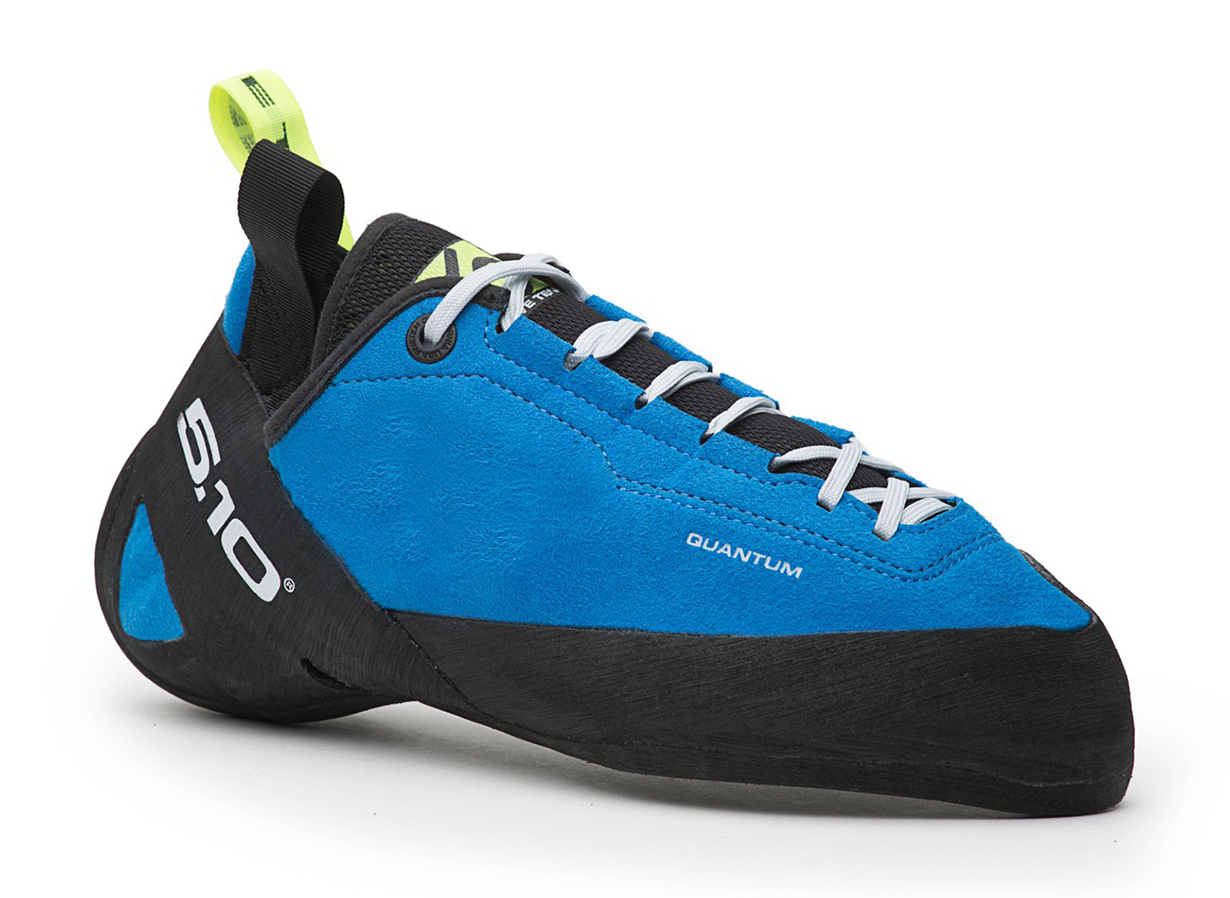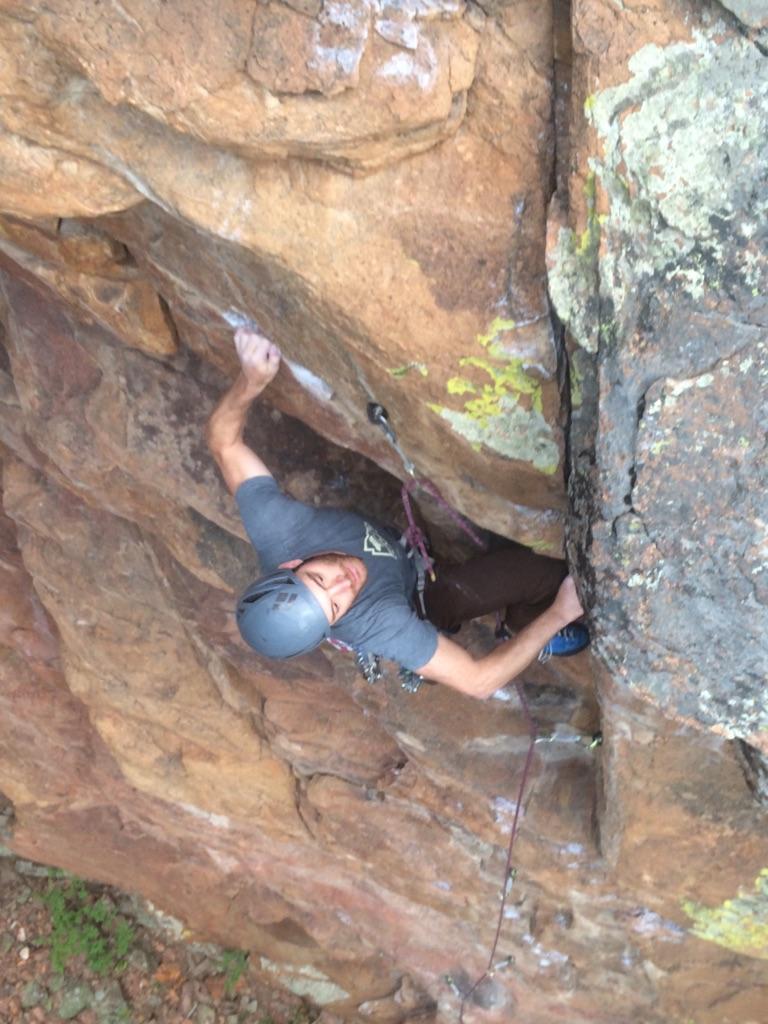
Five Ten Quantum
Stated Features:
- Stealth® C4™ rubber outsole (4.2 mm)
- Lined, synthetic Clarino upper ‐ No stretch
- Speed lace closure system
- Wider last
- Ariaprene tongue
- Stiffness ‐ Stiff
MSRP: $185.95
Size Tested: 13
Days Tested: 15
Test Locations: Yosemite & Joshua Tree, CA; Black Canyon of the Gunnison, Eldorado Canyon, Shelf Road, & Mt Evans (Black Wall), CO; Indian Creek & Castle Valley, UT; Vedauwoo & Devils Tower, WY
Intro
Five Ten calls the redesigned Quantum “an all-around performance shoe for any climbing setting.” The new Quantum is the product of Five Ten’s close work with team athletes Thomas and Alex Huber, who spent the 90’s and early 2000’s assembling a climbing resume that’s impressive both for its difficulty and diversity, with first free ascents on El Cap, speed records up The Nose, and massive alpine achievements in the Karakoram on Latok IV and Trango Tower.
While the original Quantum was billed as a blend of the Five Ten Anasazi and Dragon, the new Quantum not only incorporates a great deal of smaller changes relative to old Quantum, but most importantly, it’s built on an entirely new last. Because of this latter fact in particular, I think it is more useful to consider the 2016 Quantum as an entirely new shoe, and the question is, What are the particular strengths and weaknesses of this new “all-around performer”?
Fit / Sizing Recommendations
The fit of the Quantum prioritizes comfort, with medium-to-large volume through the midsole into the toe box, which is typical of Five Ten shoes. Its volume is somewhat above average compared to other one-shoe-quiver options (the Quantum has more width and volume in the front than the Sportiva Katana Lace, Evolv Luchador, or SCARPA Vapor), though La Sportiva’s new Otaki has a wider toe box than the Quantum.

For sizing, I recommend going with your street shoe size, since this seems to be where you can squeeze the most performance out of the Quantum in both sport and trad arenas, though the fit is definitely a little snug for sustained crack climbing.
Considering the do-it-all billing, I was surprised by how tight the Quantum was in my street shoe size (13). Though it doesn’t have too much in the way of harsh asymmetry, my toes certainly aren’t flat, and that makes for some painful jams once I start getting into tight hand-sized cracks and anything narrower.
With that said, for a shoe with a moderately-aggressive shape and enough downturn to make pure jamming a little uncomfortable, the Quantum is incredibly comfortable. Even with a performance fit, I can wear them for whole gym sessions or multiple pitches in a row without popping my heels out. Part of this is due to the Quantum’s liner, which is easy on the skin. Mostly though, the medium-volume makes the aggressive shape surprisingly wearable.
Design
A huge number of climbing shoes are positioned under the “all-around performer” banner, and that makes sense given that many climbers only have one shoe. But not every “all-rounder” is equally good at everything, and it’s always necessary to identify the real strengths and weaknesses of any one-shoe quiver. So what about the Quantum?
NEXT: Slab, Cracks, and all things Granite
